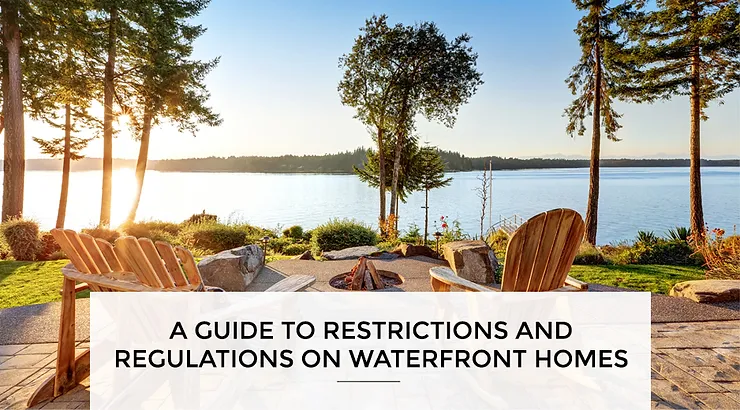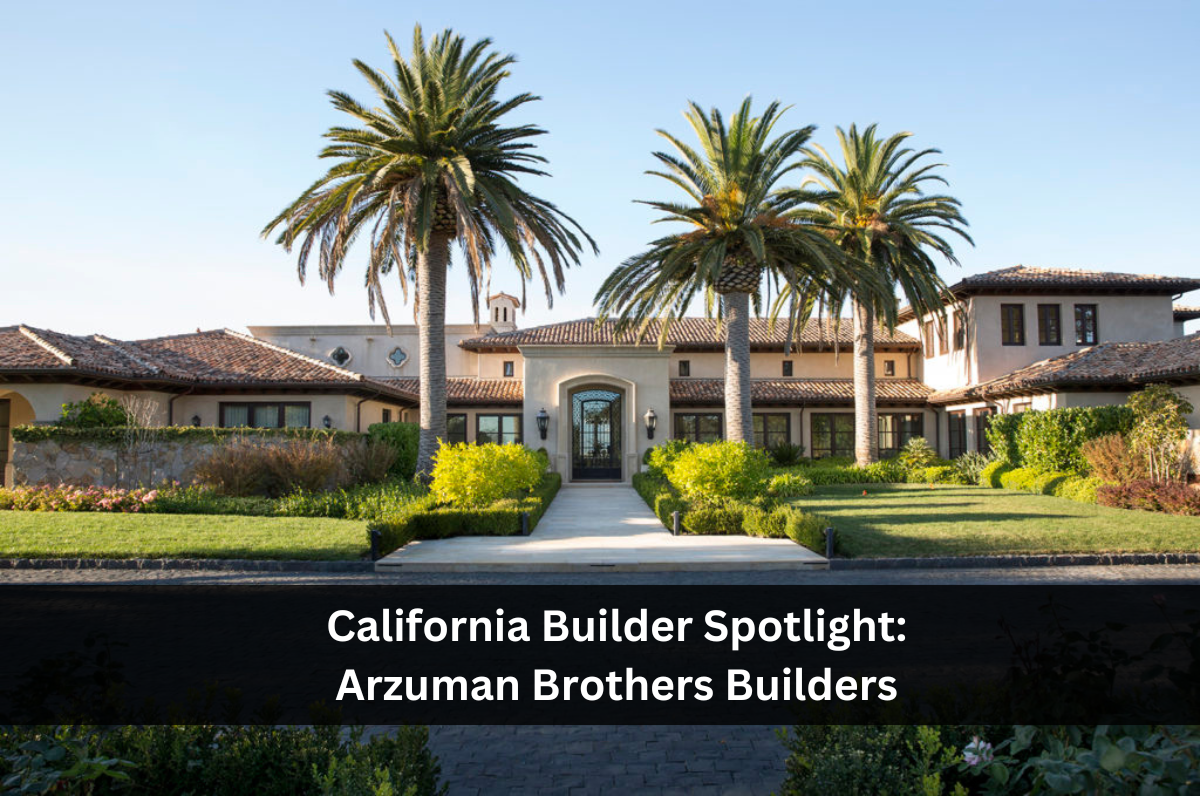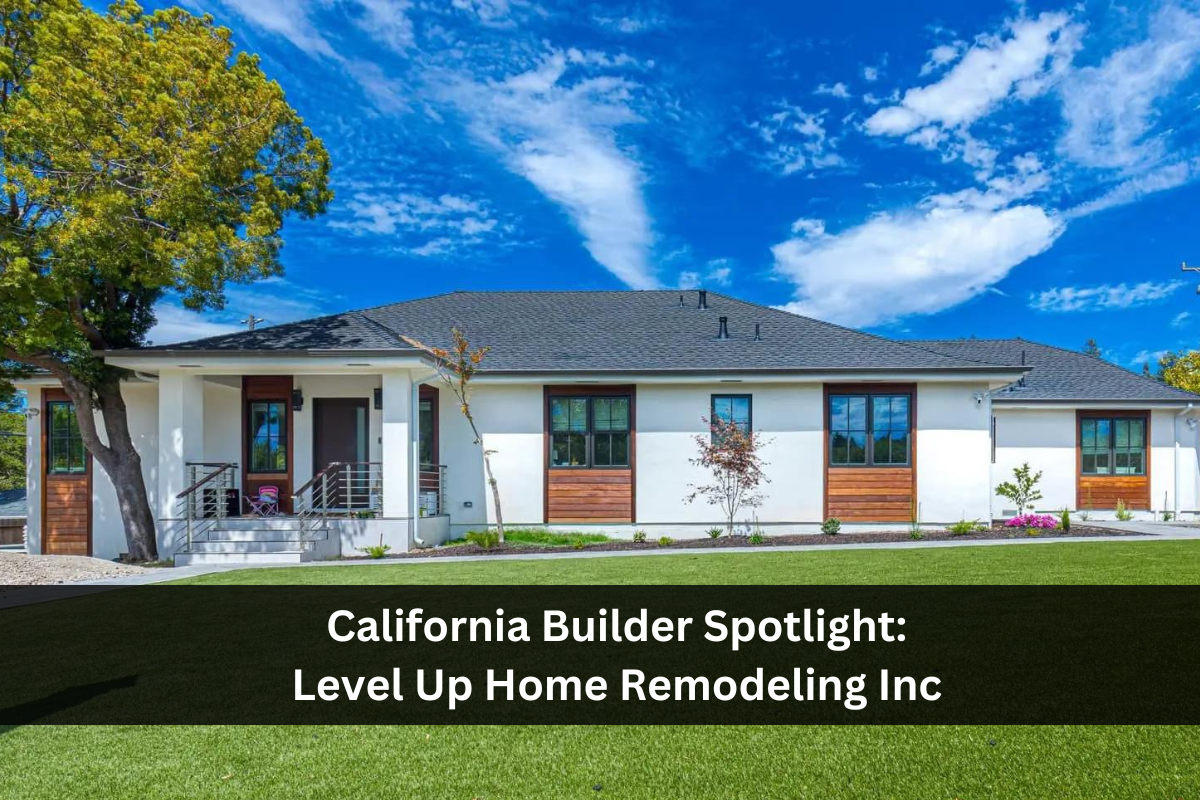When picturing your dream home, do you see yourself lounging on the beach in your backyard or gazing out over a beautiful lake? For many people, living in a waterfront home would be a dream come true.
However, before buying land to build your custom luxury home, you must recognize that waterfront property often has stricter restrictions and regulations than most others. These rules come from the local, state, or even federal government and HOAs.
The specific codes and regulations for waterfront property will vary depending on where you purchase the property. So, it’s important to know what to ask before you commit to an expensive piece of land. Let’s look at some common restrictions you’ll want to know if you plan to build a custom waterfront home.
Potential Challenges When Building a Custom Waterfront Home
Property selection is always a tricky part of the home building process, and buying waterfront property can make the experience even more difficult. There are often very restrictive rules and regulations for waterfront properties. However, these can vary depending on the state, region, or community. Unfortunately, most realtors do not know many of these restrictions.

For this reason, it’s essential to be well-versed in any restrictions and regulations before purchasing property to build your dream home.
1. Zoning Laws That Restrict House Size and Buildable Area
It’s common for there to be zoning laws for waterfront properties that seek to limit the height and size of homes. At the same time, flood regulations often mandate new homes be built high enough and far enough from the water that they are out of established flood plains.
These zoning laws conflict with flood regulations which cause many coastal homes to be squeezed vertically between the required height to be out of the flood plain without exceeding the maximum height mandated by the zoning laws.
Beyond that, there are typically rules about how far you can build from the shoreline. For example, custom home properties usually require at least a 50 to 100-foot setbacks between the house and the waters edge. These setbacks are almost always established as non-disturbance areas, meaning you cannot add any construction or improvements of any kind, or even remove trees.

There can also be regulations about how much of the land can be covered by pathways, paving stones, structures, or any other impervious surfaces that causes water to run off rather than being absorbed into the soil. And again, most realtors and architects do not know many of these restrictions on every piece of land out there.
2. Restrictions in Historic Areas
Another consideration when thinking about building a waterfront home is whether the property is in a historic area. In some cases, the lots might predate the current zoning laws and therefore don’t conform with the regulations as they exist today. Because of this, it’s common for there to be more stringent regulations regarding height, size, and setback for these nonconforming lots.

Beyond that, any property in an officially recognized historic zone (at the federal, state, or local level) will also have its share of developmental limits.
3. Stricter Building Codes
You’ll also find that building codes can be stricter in many locations concerning a waterfront home rather than a property that isn’t on the water. Coastal properties in hurricanes areas are subject to very strict building codes which mandate structural systems and weather-resistant materials which cost far more than typical home construction.

Because of the stricter building codes, zoning laws, and coastal environmental regulations pertaining to waterfront property, it’s important to work with builders and architects highly experienced in developing this type of property.
4. Regulations in Flood or Coastal Velocity Zones
When purchasing a waterfront property to build a home, you can expect high levels of regulation in developing in a flood or coastal velocity zones. The major reasons for these regulations are to minimize water runoff, limit erosion, and reduce the number of pollutants released into the natural environment.

There are usually also regulations set by inland wetland and coastal management agencies regarding how drainage is collected, stored, and returned to the environment.
Are you more interested in lake-front property than ocean-front property? Look at our list of the ten best home builders on Lake Oconee, Georgia.
5. Regulation of Waterfront Amenities
Beyond the regulations that impact your home, there are restrictions in many areas about waterfront amenities, such as boathouses, bridges, docks, and even pathways.
You will almost always need permission and a permit to build, rebuild, or repair a structure that extends into the water across the shoreline. Depending on where your property is, the permitting process might need to adhere to the city’s local guidelines, the county’s waterfront plan, the state’s regulations, and potentially even federal rules through the Army Corps of Engineers. Violation of these jurisdictions can get expensive!

If you’re dreaming of building a dock on your waterfront property, you’ll want to research the permitting process and restrictions before making your purchase. New builds often have the most stringent permitting guidelines (as opposed to repairing existing structures or features), so you must have this information upfront.
6. Property Use Restrictions
Another consideration you might not have thought of has to do with property use restrictions.

For example, many of the homes on California’s coast are subject to property use restrictions. These might make it impossible for owners to use their waterfront property as investment properties, such as short-term rentals or vacation homes. Many areas in Florida do the same, restricting rental uses to a minimum of 28 days. Homeowner associations can also restrict how property is used in this way.
7. Water Use Restrictions
When we dream about living in a luxury home on the water, our imagination often incorporates boating, fishing, kayaking, swimming, and other outdoor water activities. Before you buy a property, though, you’ll want to find out about any water use restrictions that could affect your waterfront property.
For example, some places might restrict the use of boats with electric or gas motors; this could be good news for you if you don’t want to be bothered by loud noises or wake effects while canoeing, or it could put a damper on your plans to spend your weekends on your motor boat.

There could be additional restrictions on fishing and other water use concerns. You’ll want to thoroughly research water use restrictions before purchasing a property.
Are you interested in building a home on the water or near the mountains? If so, you’ll want to check out ten of the best custom home builders on Lake Keowee, South Carolina.
8. Waterfront Buffer Zones
Are you interested in a property that is within 1,000 feet of tidal wetlands or tidal waters? If so, you might find that your building and landscaping plans are subject to additional requirements and building setbacks.

Not only that, but you can face this scrutiny from several different directions at once– from the local government, the state government, and sometimes even the Army Corp of Engineers. These building setbacks can literally limit the design of a custom home, by prohibiting construction are large parts of the property you buy. It’s crucial to secure the right team when you select your realtor, architect, and builder to fully disclose all restrictions to you before you buy these kinds of properties.
9. Regulations Regarding Water and Sewer Systems
Another important consideration is whether there are requirements regarding freshwater wells, runoff water laws, and septic systems.

It’s common for there to be significant EPA requirements to protect nearby fresh and saltwater areas. Impervious restrictions are commonly used to drastically limit the amount of construction on a property in order to reduce increased runoff water into nearby rivers, lakes, and oceans. Evern tightening EPA and floodplain restrictions can literally prohibit construction on a waterfront property even though a home already exists.
10. Restrictions Regarding Bulkheads or Shorelines
You’ll also want to research any restrictions regarding your shoreline or bulkhead. Many communities prefer natural beaches, but erosion can lead to supplemental material needing to be brought in to protect your property from being reduced by nature itself.
Before purchasing a piece of property, you’ll want to determine whether the shorelines have been receding in recent years. You can use local geological surveys to find this information, or check with the local waterway jurisdiction for exact data. If the shore has been receding, you’ll want to learn about any restrictions, services, and costs regarding erosion mitigation.

It’s also common for there to be seawalls or bulkheads at the shoreline of waterfront properties. These might be made of concrete slabs, steel pilings, stones, or other materials. This can help create a finished and clean look for the property edge.
Regulatory agencies might not allow you to repair or build a bulkhead in the manner you prefer. For this reason, you’ll want to learn about any restrictions surrounding bulkheads and shorelines before making a purchase.
11. Restrictions For Construction or Improvements Near Bluffs and Cliffs
If you’re interested in a property that sits on a bluff or a cliff overlooking the water, some of the most severe restrictions might apply to your dream home plans. More and more properties in highly desirable areas are being completely disallowed for construction because natural erosion has become epidemic due to increased construction.

Hillsides, cliffsides, and bluffs will always require costly erosion mitigation far beyond what the home requires in order to protect adjacent properties from erosion and destruction.
Not only will you want to learn about any erosion concerns and other problems that could impact your quality of life and investment, but also any restrictions involving wildlife, septic systems, wildfire threats and other issues that might be regulated on hillsides, cliffsides, or bluffs.
12. Property Improvement Restrictions
Peering down the road a bit, you’ll also want to learn about any regulations or restrictions that apply to making property improvements.

Even if you aren’t expecting to remodel or expand your home (limits for which can include the size of the footprint, the type of materials, setbacks of the home, and more), you’ll likely want to know whether any outbuildings, pools, sports courts, pavilions, or other features you’d like to build in the future could be subject to regulations. Most HOAs prohibit the parking of boats and RVs on property, even if they are parked inside a garage. RV and boat garages require much larger spaces and doors that the vast majority of HOAs prohibit.
13. HOA Regulations
It’s very common for homeowners’ associations to govern waterfront real estate in the US. While the intent behind HOAs is to preserve home value in the neighborhood, the rules and regulations of HOAs can sometimes be extremely strict and restrictive.
Again, it’s vital to work with the right realtor, architect, and builder who will make themselves knowledgeable of a properties HOA guidelines to inform you of the restrictions which will impact the home you intend to build.

You will want to thoroughly research any HOA that governs pieces of property you are interested in. This isn’t something that should be overlooked, or else it can turn the process of building your dream home into a nightmare. Strict HOAs may very likely create conflicts with your expectations for you home size and location, limitations to style and outdoor features, exterior paint colors and finishes, view preservation, and so much more.
Before purchasing a property in an HOA, you’ll want to get a copy of the association guidelines and talk to other local residents about their experience. Our Dream Home Workshop offers the deepest research in the custom home industry to help protect your from buying the wrong property. Watch our video at the beginning or end of this blog for more workshop details, and schedule a call with Mark Shattuck to see how this tool can protect you during your purchase process.
Other Considerations Before Building Waterfront Property
Before we sign off, let’s look at a few more things you’ll want to consider when deciding to build your custom home on waterfront property.
1. Material Weathering
Extra care and maintenance are often required for waterfront homes. If your property abuts a body of water, the wear and tear on the exterior of your home and any waterfront features can be extensive. The same materials located inland simply don’t wear down as quickly as those exposed to the elements near water, especially the ocean.

Waves, wind, and storms can be an issue for properties located near the ocean. You’ll also find that you’ll need to replace materials more often if your home is on a lake or a river even if there are physical obstacles in place to protect your home from the elements. However, weatherproof materials are far more costly than those that are not. To keep a home design on budget will require the foresight and planning to consider these waterfront conditions.
2. Flood Insurance
Flood insurance is another thing you’ll want to keep in mind when considering building a waterfront property. You can easily learn if a property you’re interested in is located in a flood zone by using the FEMA Flood Map Service Center.

The need for flood insurance isn’t a reason not to buy a particular property, but due to the severity of flood destruction, it’s important to be fully aware of any potential water-related issues that could be relevant to your new home.
Do You Have Questions About Designing & Building Your Waterfront Home?
Now that you’ve learned about all of these rules, regulations, and restrictions that can impact building your waterfront home, it’s easy to feel overwhelmed. But do not be dismayed! At Dream Home Studio, it’s our mission to help people achieve the home they’ve always dreamed of designing and building.

If you’ve imagined yourself enjoying your morning coffee with ocean views or spending your weekends boating on the lake, we can help make it a reality. You’ll find all your questions and concerns will be answered through our Dream Home Workshop — and so much more. Click below to find out why:







